|
Explanation: There
be bowhead whales here! I am standing next to just a small portion (the
top) of the skull of an enormous bowhead whale that was hunted by the truly
amazing denizens of this isolated island. I
am on St. Lawrence Island in the northern Bering Sea of Alaska, home of
Russian (Siberian) Yup'ik peoples who depend so much on the bounty of the sea
for food, resources, and livelihood. These hearty communities hunt the
winter sea ice for seal, walrus, waterfowl, and .. whales. But the
hunting is getting more variable in recent years, we are told, with sea ice
either drifting far from land, or piling up unpredictably. Other
communities and cultures along the Arctic Ocean also depend on whales for food
and income, particularly the bowhead whale, so named for the enormous arch of
a mouth -- in fact, some sources cite the bowhead as having the largest mouth
of any living animal. Along
the northeast coast of Alaska by the Beaufort Sea is the Inupiat settlement of
Kaktovik on tiny Barter Island. There, after the hunt, the carcasses and
bones of the bowhead are hauled out to a remote beach and lined up
there. During winter and spring snowfall, the skulls appear as some
strange cemetery line of tombstones marking the lives of these amazing
animals:
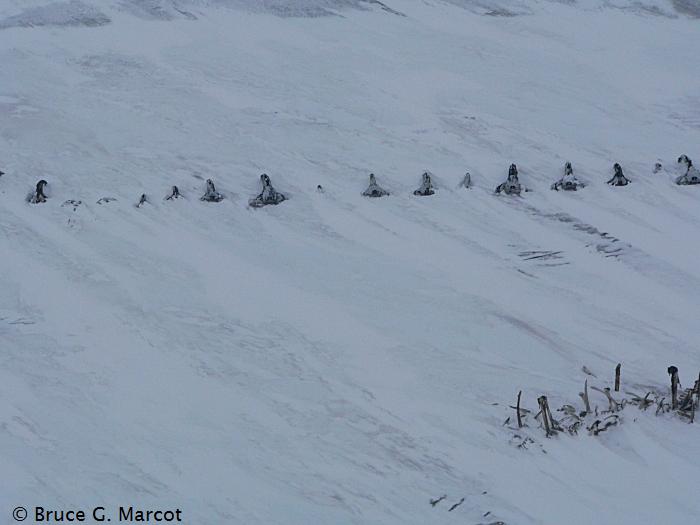
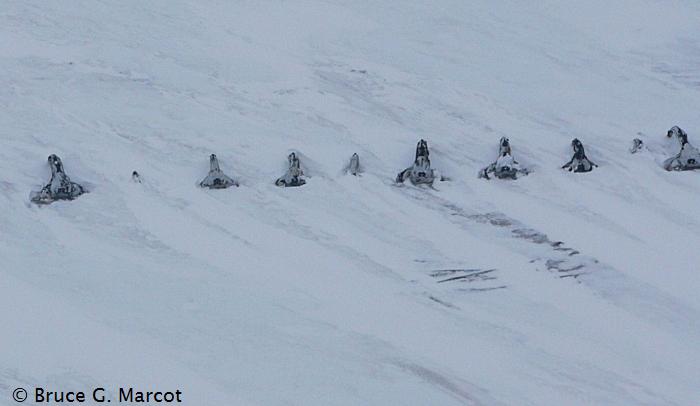
After the hunt: carcass line of upper skulls of bowhead whales
on a remote beach on Barter Island, northwest Alaska, along the Beaufort Sea.
I took these photos from a helicopter after we briefly landed in Kaktovik
for fuel, then as we headed out over the Arctic Sea ice on a project studying
polar bears.
Polar bears come to these carcasses for food, and sometimes the bears
enter the village, endangering the residents. It can be
a tenuous relationship.
Back on St. Lawrence Island, I happened upon other
remants of bowhead giants:
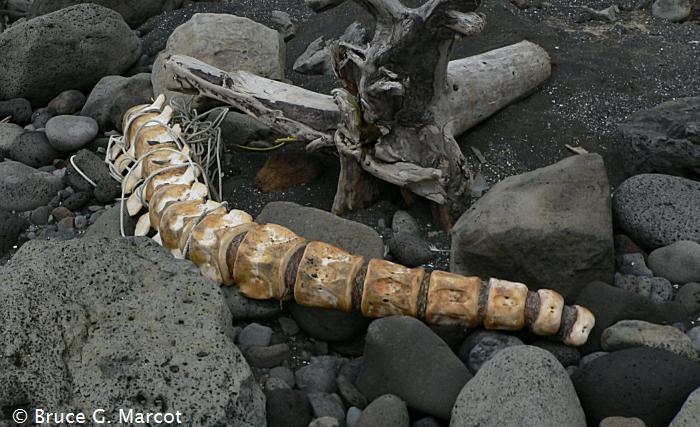
Vertebral column of a bowhead whale.
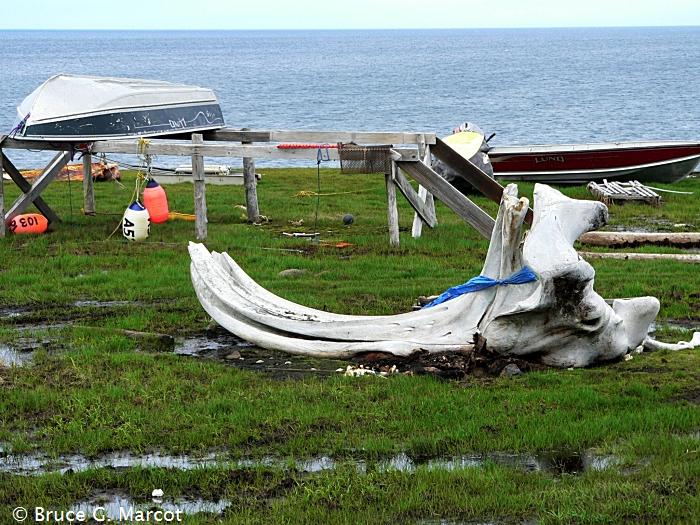
Here is the massive lower jaw of a bowhead. The upper skull, in
this week's
main photo above, fits into the lower jaw like a jigsaw puzzle.
In the background, notice the two tiny boats used for hunting sea life.
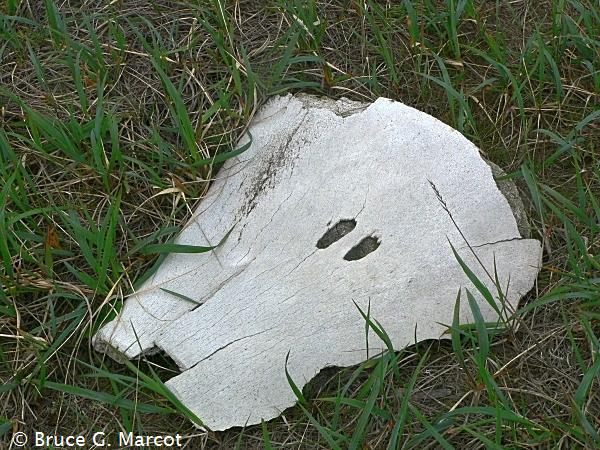
Out on a remote cove far from the main village of Savoonga on
St. Lawrence Island, I found more bowhead remains, such as this pelvis ...
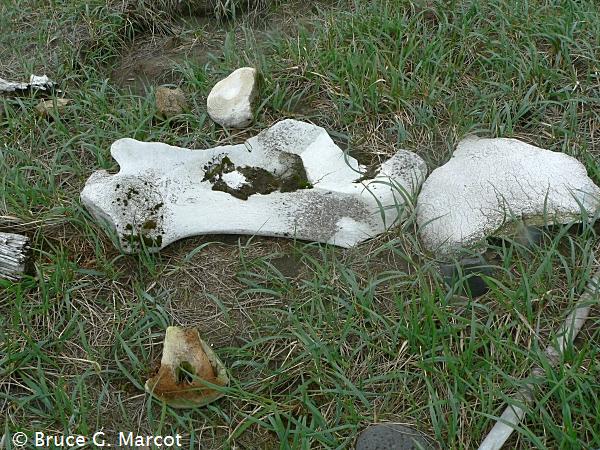
... perhaps part of the scapula ... 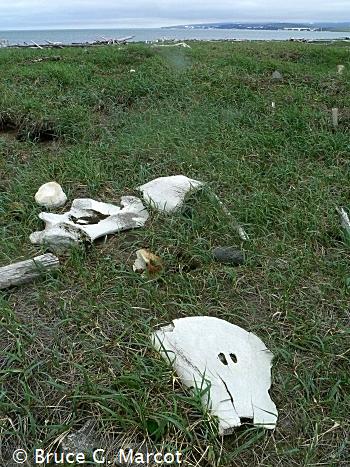
... and other remains.
This beach was currently unoccupied,
but had sign and middens of occupancy
dating back perhaps nine
thousand years.
I suspect that bowheads have
been part of the culture of these Yup'ik
people for many millennia.
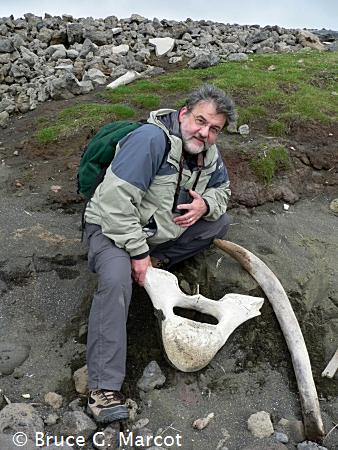
And here is yours truly with a bowhead
pelvis
and rib.
Bowheads have recovered from overhunting
and are doing well. May they, and their native hominine brethren
continue to flourish in these increasingly trying
times of Arctic Sea ice melt and climate change.
|
Index |
Location | Search | About EPOW | ... Next >